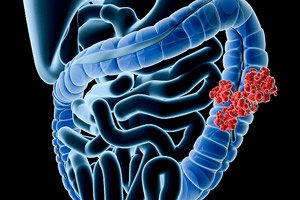
All iLive content is medically reviewed or fact checked to ensure as much factual accuracy as possible.
We have strict sourcing guidelines and only link to reputable media sites, academic research institutions and, whenever possible, medically peer reviewed studies. Note that the numbers in parentheses ([1], [2], etc.) are clickable links to these studies.
If you feel that any of our content is inaccurate, out-of-date, or otherwise questionable, please select it and press Ctrl + Enter.
Statins for Colorectal Cancer: How 'Cholesterol' Drugs Suppress the Wnt/β-Catenin Pathway and Shrink Tumors
Last reviewed: 18.08.2025
 ">
">The researchers showed that conventional statins (primarily simvastatin) suppress the key oncogenic Wnt/β-catenin pathway in colorectal cancer models, shift the balance of SATB1/SATB2 proteins toward a less aggressive phenotype, and reduce tumor mass in mice without noticeable side effects. The work was published in Oncotarget.
Background
- Why the target is the Wnt/β-catenin pathway. The overwhelming majority of CRCs are characterized by activation of Wnt signaling; in more than ~80% of cases, there are mutations in APC, and less often, CTNNB1 and others. It is Wnt that triggers adenomatosis and supports malignant growth, but its direct blocking often runs into toxicity.
- The problem with direct Wnt inhibitors: Drugs in the PORCN inhibitor class (e.g., WNT974/LGK974) have been shown in preclinical and early clinical studies to cause bone loss, one of the bottlenecks for long-term therapy. This is pushing for gentler, “indirect” ways to silence Wnt.
- Why statins — the logic of repositioning. Statins block the mevalonate pathway (HMG-CoA reductase) and thereby reduce the synthesis of isoprenoids needed for prenylation of Ras/Rho and a number of oncogenic cascades; much data has been accumulated on the “antioncogenic” effects of statins in cells and animals. But clinical meta-analyses on the overall risk of cancer give ambiguous results — additional mechanistic work was needed.
- Linkage to “special” chromatin regulators. In CRC, SATB1 and SATB2 proteins behave in opposite ways: SATB1 is associated with invasion and a worse prognosis, while SATB2 is associated with a more favorable course and serves as a diagnostic/prognostic marker. At the same time, SATB1 functionally intersects with β-catenin, forming a “feeding” transcriptional loop. This makes the Wnt ↔ SATB1/SATB2 axis attractive for intervention.
- What exactly does the current paper add? The authors showed in cells, 3D spheroids, and mice that statins reduce levels of core Wnt pathway proteins (including β-catenin), while suppressing SATB1 and shifting the phenotype to a less aggressive one; the effect is reversible by adding mevalonate, indicating a causal role for the mevalonate pathway. This “indirect” anti-Wnt mechanism is exactly what is needed, given the limitations of direct Wnt inhibitors.
What did they do?
A team from India conducted a “multi-omic” analysis of the action of statins in a colorectal cancer (CRC) model: lipidomics + transcriptomics + proteomics on cell lines (HCT15, HCT116, HT29), 3D spheroids and in vivo experiments on mice. The main interest is the effect on the Wnt/β-catenin pathway and the associated chromatin regulators SATB1/SATB2. For cellular tests, simvastatin was mainly used (usually 10 μM), in animal experiments - simvastatin and rosuvastatin.
Key Results
- Wnt signaling is silenced at the protein level. RNA-seq shows almost no significant shifts in Wnt core genes, but proteomics shows a drop in the levels of β-catenin, YAP, AXIN2, TCF4 and other players, while housekeeping proteins (actin, GAPDH) are unchanged. This points to post-transcriptional suppression of the pathway.
- SATB1 down, SATB2 up/no significant change. Immunoblots show a decrease in oncogenic SATB1 and a trend towards an increase in SATB2, consistent with a “shift” from a mesenchymal to a more epithelial state (EMT → MET) in 3D spheroids.
- The effect is truly “statin-like.” Addition of mevalonate (bypasses the HMG-CoA reductase block) restores β-catenin and SATB1 levels—a clear indication that the key action is via the mevalonate pathway.
- In living models, tumors are reduced. In NOD-SCID mice with subcutaneously injected CRC cells, treatment with simvastatin or rosuvastatin resulted in a significant reduction in tumor burden; in parallel, SATB1 was reduced in tumors. The authors note the absence of significant AEs.
Why is this important?
The Wnt/β-catenin pathway is the “ignition” for adenomas and CRC progression, but direct inhibitors of the pathway core are toxic/difficult to implement. Statins, already known and cheap drugs, are candidates for repositioning here: they indirectly hit Wnt, reduce SATB1 (associated with a poor prognosis) and together form an antitumor phenotype. This coincides with the theses of the journal press release about the potential of statins as an addition to existing therapy and, potentially, to primary/secondary prevention strategies in risk groups.
Important details and caveats
- This is still preclinical. We are talking about cell models and mice; it is too early to apply the findings to patients. Randomized clinical trials with surrogate and “hard” outcomes are needed.
- Dosage and pharmacology. The paper discusses that the in vitro comparison of 10 μM and in vivo 40 mg/kg (for simvastatin) is not directly transferable: liver metabolism, distribution and protein binding reduce the available concentration. This is important to consider before clinical translation.
- Not all statins are the same? Effects are shown for simvastatin and rosuvastatin; differences within the class are possible (lipophilicity, tissue penetration). This is a separate task for future research.
What's next?
The authors propose testing combinations of statins with chemo-/targeted therapy for CRC, validating SATB1/SATB2 as response markers, and testing whether the “anti-Wnt” effect is preserved in patients with different mutational profiles (APC, CTNNB1, etc.). If the signals are confirmed, oncologists will have an accessible tool to enhance standard regimens.
Source: Tripathi S. et al. Statins exhibit anti-tumor potential by modulating Wnt/β-catenin signaling in colorectal cancer. Oncotarget 16 (2025): 562–581. https://doi.org/10.18632/oncotarget.28755
